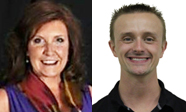
There are many children and adults in the world with complex communication needs (CCN) who would benefit from Augmentative and Alternative Communication (AAC). Nonetheless, unfounded misconceptions that have existed for decades sometimes prevent people from even investigating the possibility of how AAC might help them or someone they know.
Much has been written over the years discussing these myths. Just type “augmentative communication myths” or “AAC misconceptions” into Google and you will get a slew of articles and studies. Out of these, the most comprehensive material that I have found is the
June 2006 issue of Augmentative Communication News from author and speech/language pathologist (SLP), Dr. Sarah W. Blackstone. This newsletter covers several AAC myths for adults and children with communication difficulties. Although it was published over eight years ago, all the information is still very relevant and true today.
For today’s post, I thought I would highlight the top three myths that Dr. Blackstone discussed that I have encountered during my time as an SLP and Assistive Technology Professional (ATP).
Myth #1: AAC is synonymous with technology.
AAC is not just devices such as an iPad with communication apps or an $8000 Dynavox. In fact, AAC doesn’t even have to require electricity. AAC can mean a simple board with two small objects attached from which someone can make a choice or a laminated alphabet/phrase board where someone can spell out what they want to say by pointing. For a definition of AAC types, check out what the
American Speech and Hearing Association (ASHA) has to say.
Myth #2: AAC is a last resort and means professionals are giving up on speech.
According to ASHA,
AAC is within the scope of practice for SLPs. Dr. Blackstone indicates in the
2006 article that for adults with acquired conditions such as a stroke or ALS where speech is affected , AAC can be an appropriate form of treatment for communication difficulties that are temporary or long-term. She states that for children ”as soon as severe communication problems are identified, the evidence shows that professionals should consider AAC interventions to enhance and support speech and to allow language to develop.”
According to
Romski and Sevcik (2005) for many children with CCN such as Autism, Cerebral Palsy, and Down Syndrome, ”the AAC devices and strategies are a tool, a means to an end—language and communication skills—not the end”.
Myth #3: AAC hinders or stops further speech development
If you have questions on AAC or would like to rent or have a demonstration of AAC devices, please contact IPAT at 1-800-895-4728 or ipatinfo@ndipat.org.






 There are many children and adults in the world with complex communication needs (CCN) who would benefit from Augmentative and Alternative Communication (AAC). Nonetheless, unfounded misconceptions that have existed for decades sometimes prevent people from even investigating the possibility of how AAC might help them or someone they know.
There are many children and adults in the world with complex communication needs (CCN) who would benefit from Augmentative and Alternative Communication (AAC). Nonetheless, unfounded misconceptions that have existed for decades sometimes prevent people from even investigating the possibility of how AAC might help them or someone they know.